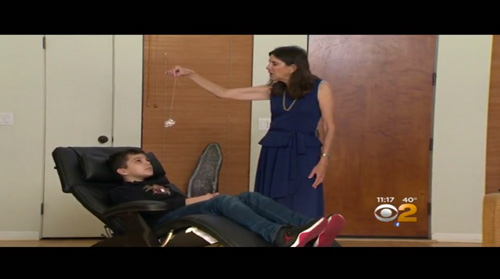
Hypnosis: Relaxation That Empowers
As scientific studies continue to affirm the safety and therapeutic effects of hypnosis for a broad spectrum of problems and conditions, it is not surprising that more parents are turning to hypnotherapy for help with their children’s issues. Teaching kids how to relax, focus, and become aware of their inner experiences empowers them.
In the video featured above, a recent segment on CBS news featured Los Angeles hypnotherapist Lisa Machenberg, a self-proclaimed “hypno-mom,” who began using hypnosis successfully on her own children for better sleep when they were just seven months old and continued with it to improve their sports performance.
No More Risky Than Sleep
That same news segment was quick to point out, however, that not all mental health professionals advocate hypnosis for children. New York psychologist Dr. Sanam Hafeez criticizes the use of hypnoparenting to help a child gain greater focus and be more effective in school. She says “…it’s a very risky thing to do” and adds that “putting kids in a trance is going too far and shouldn’t take the place of good parenting skills.”
But what is the risk? Hypnosis has been shown to be a safe, naturally occurring state for both adults and children who go into it every night falling off to sleep, or during the day when daydreaming, fantasizing, or becoming totally engrossed in a favorite pursuit, book, movie, or concert. Dr. Hafeez never really spells out the risk, but explicitly claims “The idea is not to gain control of a child’s mind, but to teach them what’s appropriate, what’s desirable, so that they can have control over their own mind.”
Whether to help children sleep better, stop bedwetting, have greater focus and concentration for schoolwork, or control their impulses, hypnoparenting is an extension of good parenting, not a practice in opposition to it.
With proper training, the parent first induces deep relaxation and inward focus in the child to gain access to their subconscious (where positive change originates) and then offers supportive and constructive suggestions directly related to the specific goals that the parent and child share.
The suggestions serve as directives on how to think and behave appropriately in ways that benefit the child as well as those in the child’s environment and those to whom the child relates. Through repetition, the child not only comes to accept these directives, but also learns how to give him or herself these suggestions, thereby gaining control over his or her mental states.


